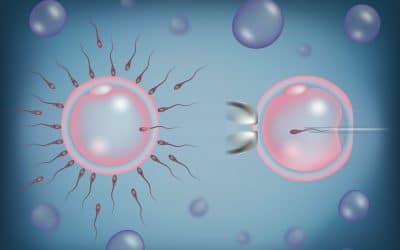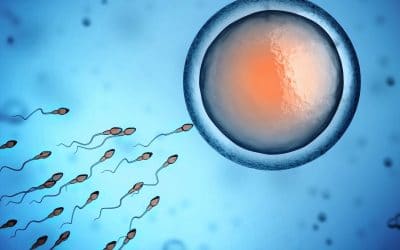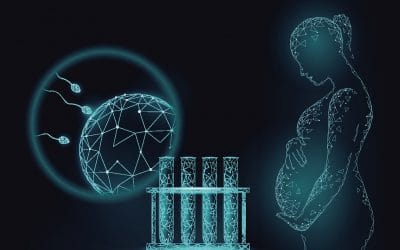2021 Bioethics Law: Assisted Reproductive Technology (ART)
I. The ART technique available without any medical indication
Deletion of the requirement for a medical indication of confirmed infertility for the use of Assisted Reproductive Technology techniques represents a major change in the law. The choice of ART is simply conditional on the existence of a “parental project”.
Heralded as the “ART for all“, the law authorises and organises access to Assisted Reproductive Technology techniques for women, whether single or in a partnership. Article L2141-2 of the public health code now stipulates that “Assisted Reproductive Technology is intended to satisfy a parental project. Any partnership consisting of a man and a woman or two women or any single woman qualifies for Assisted Reproductive Technology”.
In its wording, the focus is on the “parental project”, placing the will of the individual or the couple at the heart of the process. The wording applicable since 2011 and which has therefore been repealed stipulated that: “Assisted Reproductive Technology is intended to correct the infertility of a couple or to avoid transmitting to the child or a member of the couple of a particularly serious disease. The pathological nature of the infertility must be diagnosed medically”.
The extension of ART with a third-party donor to single women or two-women couples has an undeniable effect of doing away with the father and the paternal lineage. A decree issued in September 2021 specifies age conditions for such access:
- Ovocytes may be collected from the woman up to her 43rd birthday;
- Sperm may be collected from the man up to his 60th birthday.
In the case of ART for a couple, the law maintains the requirement for prior consent of each member of the couple before resorting to Assisted Reproductive Technology. “Both members of the couple or the single woman must consent prior to the artificial insemination or transfer of embryos.”
The law has also done away with the prohibition of ART with a double donation of gametes, when a couple accepts a donation of both oocytes and sperm. In the previous version of the law, a couple could not accept such a double donation. The intention was to maintain as far as possible a genetic link between the child and at least one of its parents. In the event of double infertility, the couple could ask for the donation of an embryo.
II. Self-preservation of gametes without any medical indication is also instituted
According to the Agency of Biomedicine (ABM) in its brochure on the subject, “The purpose of self-preservation of gametes is to have them available if, later on, a child project should require ART (Assisted Reproductive Technology)”. The ABM also points out the role of individual will: The indication is not of a medical nature but is the result of the person’s choice. That is the novelty introduced by the 2021 bioethics law.”
The same decree in September 2021 determined the age criteria for such self-preservation:
- Oocytes may be collected from women from their twenty-ninth till their thirty-seventh birthday;
- Sperm may be collected from men between their twenty-ninth and their forty-fifth birthday
- The collected gametes are preserved in centres which are approved for the purpose.
- The law states that each year, the person having undertaken such preservation must indicate whether they wish to:
- Preserve them,
- Use them for ART,
- Make them available to persons waiting for a donation of gametes,
- Donate them for scientific research,
- Terminate their preservation.
It is important to note that for self-preservation of sperm, the man may consent for part of the sperm collected to be donated. In the absence of any response to reminders for 10 consecutive years, the gametes are destroyed. In the event of death, their preservation is terminated, unless the person whilst alive had consented to a donation or research. Although the costs of the procedure associated with the collection of gametes are covered by health insurance, their self-preservation incurs a charge of 40.5 euros per year.
The import and export of gametes or germinal tissues from the human body are subject to authorisation delivered by the Agency of Biomedicine. They are exclusively intended to allow the completion of a “parental project” through ART, at the exclusion of any commercial gain.
The question of export, combined with the destruction in the event of death, has recently given rise to complex cases of precedent.
III. The impact on filiation
Prior to the 2021 law, the ART techniques tended to imitate natural procreation, in order to guarantee for the child that its filiation is consistent with respect to the biological requirements for procreation (a mother and a father). In order to undertake ART with a donor, the candidate couple must certify their consent with a judge or a lawyer. This consent procedure underlines the difficulty with this type of procreation of ensuring that the child thus conceived will be cared for and brought up by a father and a mother to compensate for the existential lack of one of the biological parents.
Extending its availability to single women or to two-women couples necessarily impacts this model. The filiation becomes mainly based on the will, established by the existence of a “parental project”, instead of a link or a biological reality.
- In the context of a man and woman couple, the rules governing the establishment of filiation are unchanged. The maternal filiation is established with respect to the woman who gives birth to the child. If they are married, the paternal filiation is established on the presumption of paternity. If they are not married, it is established through voluntary recognition.
- In the case of a single woman, resorting to ART involves a third-party sperm donor. The filiation of the child is established with respect to the woman who gives birth and who is recognised as the mother. If the single mother subsequently marries a man, he may submit an application to adopt the child. The same applies if she marries a woman.
- In the case of a two-women couple, whether married, in a civil partnership or not: resorting to ART involves a third-party sperm donor. The filiation of the mother is established automatically to the woman who gives birth. A joint recognition in anticipation certified by a lawyer for the other woman enables the establishment of filiation.
In the event of non-presentation of the lawyer-certified recognition in anticipation when registering the birth, the second woman can only be mentioned as a mother in civil records at the request of the Public Prosecutor, and only the woman having given birth will have parental authority over the child. The French National Assembly did not accept the proposal by the Senate for recognition via the already available channel of adoption. Currently, birth certificates can therefore mention two women as mothers of the child.
IV. Donor anonymity and the question of origins
The law also has a section concerning access to origins for children conceived through donated gametes. It puts an end to the anonymity of donors, the principle established in the first bioethics law in 1994 and registered under article 16-8 of the civil code. This anonymity concerned the identity and so-called “non-identifying” data. These are identified in the public health code:
- Their age at the moment of the donation
- Their general state as they describe themselves at the moment of the donation, with respect to their perceived general state, psychological state and in terms of physical activity;
- Their physical characteristics, in particular their height and weight at the moment of the donation, skin colour, natural hair colour and colour of their eyes;
- Their family and professional situation, consisting merely of their marital status, their number of children, their educational level and their socio-professional status;
- Their country of birth;
- The motivations for their donation, in their own hand.
This anonymity was required at the time as a corollary for the free of charge donation, and was considered as a condition for the development of ART techniques. With the passage of time, the anonymity has been unable to withstand research into their origins by children conceived through such techniques, once they became adults. This research has brought to light an intrinsic paradox in ART.
On the one hand, the biological and genetic links are kept under wraps in the “legal fiction” (a term employed by jurists) of the filiation of the child conceived by ART. On the other hand, the importance for the child to know its origins, the importance of its biological heritage cannot be denied, quite apart from any medical questions. A genetic lineage, is also a family history.
Moreover, the right to know one’s origins “as far as is possible” is recognised for the child by article 7 of the United Nations International Convention of Children’s Rights, which convention has been ratified by France.
Henceforth, those born through ART may, on reaching adulthood and at their request, apply for access to the identity of their donor (name at birth, first names, sex, date and place of birth) as well as their non-identifying data. A Commission (CAPADD) has been created to deal with requests for access by those born through ART to the data of their third-party donors. It comes under the authority of the Health Minister and is presided over by a judiciary magistrate. These procedures have been made available since 1st September 2022.
As indicated on the Health Ministry web site: “As from 1st September 2022, those who wish to donate their gametes or offer their embryos will have to expressly consent to the communication of their identity and their non-identifying data. In the event of refusal, they will not be able to proceed with their donation. Such consent shall be collected by the doctor at the donation centre and will be retained by the centre. As soon as the donation is used, the donation will not be revocable.
For adults born from donations made prior to 1st September 2022, the right of access will be subject to the consent of the donor for the communication of their identity and non-identifying data, which was not a prerequisite for donations prior to that date.
The effect of this reform will not be immediate: the first children born in 2023 who so request will have access to their origins only from 2041, without having any right for any relation with the donor. For children born under the regime of the previous law, they may submit a request and receive the information if the donor, once located and contacted, so accepts.
V. The filiation of children born by surrogate motherhood abroad
Surrogate motherhood remains prohibited as a principle in France, by a law dated 1994 relative to respect for the human body. An article in the civil code establishes that “Any convention concerning the procreation or gestation on behalf of another is invalid.” The 2021 bioethics law and the debates which went with it have not deleted this prohibition.
Some French nationals nevertheless decide to resort to such practice – which exploits a woman’s body and makes the child the subject of a contract, separated at birth from the person within whom their life took form – abroad, in certain nations where such practice is tolerated. This is how certain requests have been made in France for the transcription of birth certificates. These sleeping partners of surrogate motherhood have forced French law to evolve over the last years.
The court of appeals finally authorised the full transcription of the birth certificate of a child born through surrogate motherhood abroad subject to the facts declared on the certificate being compliant with the foreign law. In other words: to declare as mother the sleeping partner of the surrogate motherhood, who had not carried or given birth to the child, and to delete from the birth certificate the mother who truly carried and gave birth to the child in question.
The claims by sleeping partners referred up to the European Court of Human Rights. Their decision went against France, which did not appeal the decision thus signalling a lack of political will to truly combat surrogate motherhood.
But through the latest revision of the bioethics law, this subject is covered in an amendment which cancels and unifies the precedent. The civil code has been supplemented in order to specify that the recognition of filiation abroad must be “considered with respect to French law”, which still prohibits surrogate motherhood conventions (Civil code 16-7) and which, apart from the exceptions which it determines, attaches the maternal filiation to the woman giving birth and does not allow, except through adoption, the establishment of a double paternal filiation.
VI. Techniques which remain prohibited
Despite the requests for amendments submitted during consideration of the law, certain techniques remain prohibited:
- Post-mortem ART (after the death of one or both members of the couple, for whom gametes or embryos have been cryopreserved),
- The so-called ROPA method (“Reception of the oocyte by the partner”) where the oocyte of one is collected, fertilized in vitro by a third-party donor before being implanted in the uterus of the other woman.



